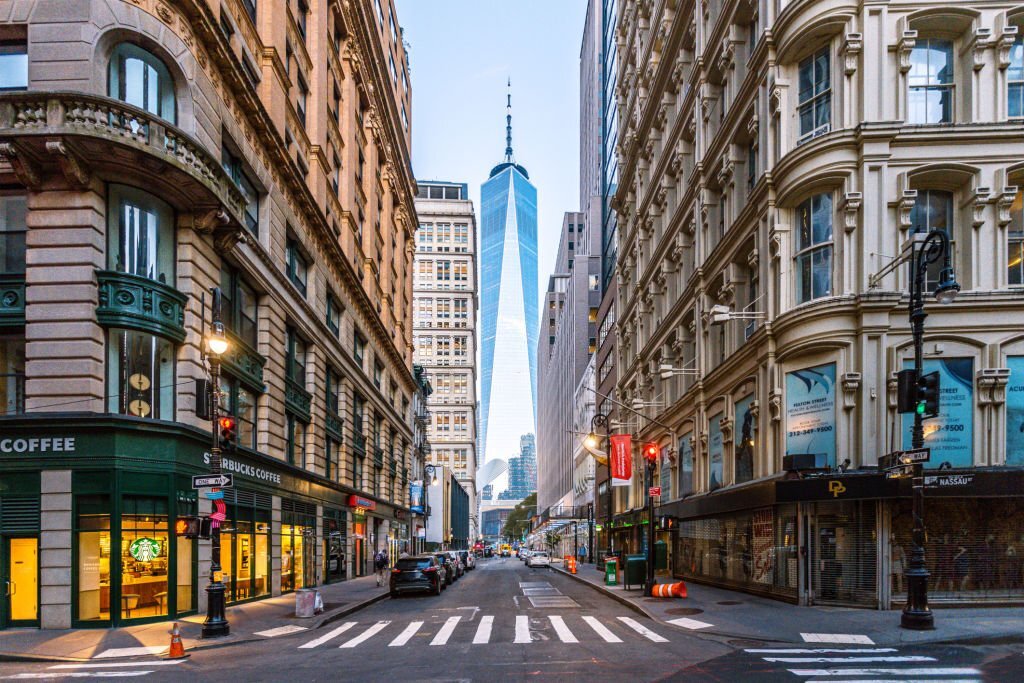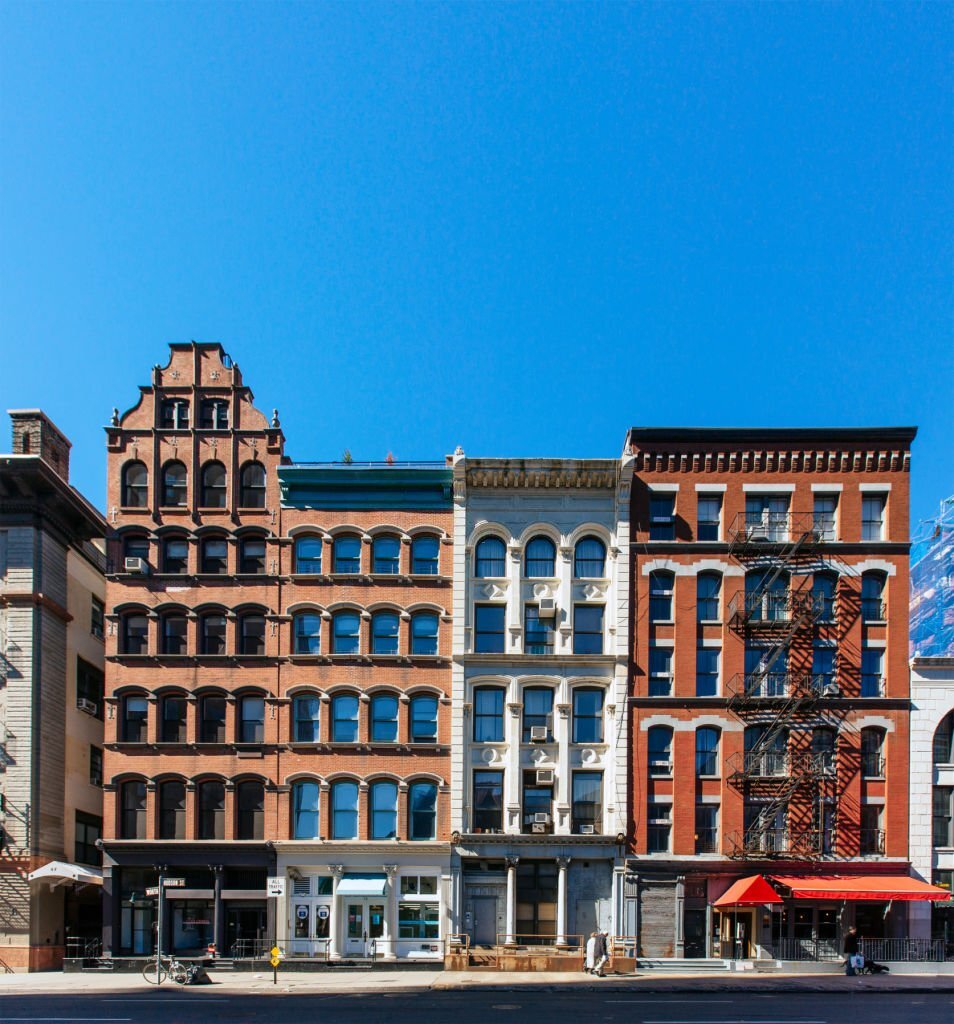Manhattan, the heart of New York City, is often divided into two distinct regions: Uptown and Downtown. These terms, unique to American English, have their roots in the city’s history and have come to represent not just geographical areas, but also cultural, social, and lifestyle differences.
The terms ‘Uptown’ and ‘Downtown’ originated from the layout of Manhattan. Since the southern tip of the island was settled first, it was referred to as downtown. As the city expanded northwards, the term ‘uptown’ was coined. Downtown became the central hub of the city, where the old city and businesses were located, while Uptown came to represent the residential parts of the city, often located on the outskirts of the commercial hub.
Uptown vs Downtown NYC: Historical Development
The terms “Uptown” and “Downtown” are more than just geographical indicators; they represent distinct historical, cultural, and social narratives that have shaped the city’s identity. Let’s take a closer look.
Uptown: The Birth of Affluence and Prestige
Uptown’s growth was initially driven by the city’s elite seeking refuge from the crowded Downtown streets. As the city expanded northwards, areas like the Upper East Side began to flourish as hubs of affluence and luxury.
Architectural Renaissance
The Gilded Age saw the construction of grand mansions and brownstones, many of which stand to this day as testaments to the era’s opulence.
Cultural and Social Institutions
Institutions like the Metropolitan Museum of Art and the American Museum of Natural History found their homes Uptown, further solidifying its status as a cultural epicenter.
Downtown: The Heartbeat of a Burgeoning Metropolis
Downtown Manhattan, particularly areas like the Financial District, holds the distinction of being where New York City was born. Historic sites like Wall Street and the old Dutch settlement structures provide glimpses into the city’s early days.
Immigration and Cultural Melting Pot
Neighborhoods like the Lower East Side became entry points for waves of immigrants, each bringing their unique cultures, traditions, and cuisines. This influx transformed Downtown into a mosaic of diverse communities.
Artistic and Bohemian Movements
Greenwich Village and the East Village became epicenters for artists, writers, and musicians in the 20th century. These areas played pivotal roles in movements like the Beat Generation and the punk rock scene.
The Geographical Divide
In New York City, anything south of 30th Street is considered Downtown, while the area north of 59th Street is considered Uptown. Midtown lies between these two areas, from 30th to 59th Streets. However, these boundaries are not universally agreed upon.
Some locals believe that Downtown borders 14th Street and areas like Gramercy, Flatiron, and Chelsea should be excluded from Downtown. Similarly, the area north of Central Park, including neighborhoods such as Washington Heights, Harlem, and Inwood, is often referred to as Upper Manhattan, with varying definitions of its boundaries.
The Cultural Divide
More than just geographical locations, ‘Uptown’ and ‘Downtown’ have come to represent different lifestyles and cultural atmospheres. Downtown Manhattan, with its historic heart and commercial center, is often associated with a fast-paced lifestyle, trendy stores, and a vibrant arts scene. It’s home to neighborhoods like SoHo, Tribeca, and the West Village.
On the other hand, Uptown Manhattan, which includes the Upper West and East Sides, is often associated with a slower pace of life, affluence, and residential stability. The area is known for its single-family homes, prestigious museums, and proximity to Central Park. The Upper East Side, in particular, has long been associated with wealth and poshness.
The Architectural Divide
The architectural styles of Uptown and Downtown Manhattan also contribute to their distinct identities. Downtown Manhattan is known for its historic buildings, lofts, and cast-iron architecture, particularly in neighborhoods like SoHo and Tribeca. The area is also home to Wall Street’s towering skyscrapers and the iconic Flatiron Building.
Uptown Manhattan, on the other hand, is characterized by its stately brownstones and luxury high-rises. The Upper East Side is known for its grand, pre-war buildings, while the Upper West Side is home to many of the city’s most beautiful brownstones. The area also boasts some of the city’s most iconic structures, such as the grand residential buildings along Central Park West.
Uptown vs Downtown NYC: The Lifestyle Divide
The lifestyle divide between Uptown and Downtown Manhattan is often reflected in the types of businesses and amenities found in each area. Downtown Manhattan is known for its trendy boutiques, cutting-edge art galleries, and a food scene that ranges from hole-in-the-wall eateries to Michelin-starred restaurants. The area is also known for its vibrant nightlife, with a plethora of bars, clubs, and music venues.
Uptown Manhattan, in contrast, is home to many of the city’s most prestigious cultural institutions, including the Metropolitan Museum of Art, the Guggenheim Museum, and Lincoln Center. The area is also known for its high-end shopping, particularly along Madison Avenue, and its fine dining establishments. While Uptown may not have the same nightlife scene as Downtown, it offers its own form of entertainment in the form of world-class concerts, ballets, and operas.
Uptown vs Downtown NYC: The Social Divide
The Uptown vs Downtown divide also has social implications. Historically, Uptown Manhattan has been associated with old money and the city’s social elite, while Downtown Manhattan has been seen as more bohemian and avant-garde.

However, these distinctions have blurred in recent years, with wealth and trendiness found in both areas. Despite this, the perception of Uptown as more traditional and Downtown as more progressive still persists.
Best Neighborhoods In Uptown Manhattan
Uptown Manhattan, stretching from Columbus Circle at 59th street to the northern edge of Central Park at 96th street, is a blend of elegance and history.
- Upper East Side: A symbol of opulence, the Upper East Side is where the city’s elite reside. It’s a neighborhood adorned with luxury apartments, serene streets, and renowned museums like the Metropolitan Museum of Art and the Guggenheim Museum.

- Upper West Side: A mirror to its eastern counterpart, the Upper West Side offers a relaxed ambiance. Historic brownstones, local cafes, and cultural hubs like the Metropolitan Opera and the American Museum of Natural History define this area.
Beyond the traditional Uptown boundaries lie vibrant neighborhoods such as Harlem, Morningside Heights, Inwood, and Washington Heights. Each boasts its unique charm, from the academic aura of Columbia University in Morningside Heights to the medieval allure of The Met Cloisters in Inwood.
Best Neighborhoods In Downtown Manhattan
Downtown Manhattan is a mosaic of diverse neighborhoods, from the affluence of Tribeca to the artistic spirit of the East Village.
- Tribeca: Surrounding the World Trade Center, Tribeca boasts renovated industrial spaces and attractions like the Tribeca Film Festival.

- West Village & Greenwich Village: These neighboring villages, with their historic townhouses and cobblestone streets, are a testament to Manhattan’s rich past. The West Village and Greenwich Village are cultural hubs, home to institutions like NYU.
- SoHo & NoHo: SoHo is a fashionista’s paradise, while NoHo is an artistic enclave, each boasting distinctive architecture and a vibrant atmosphere.
- East Village: Once the heart of punk rock, the East Village remains a haven for artists and musicians.
- Lower East Side: A blend of history and modernity, the Lower East Side offers nightlife, the Tenement Museum, and the iconic Katz’s Deli.
- Chinatown, Little Italy, and NoLita: These overlapping neighborhoods offer a culinary journey, from the dim sum of Chinatown to the cannolis of Little Italy. Meanwhile, NoLita offers a quieter charm.
Conclusion: Uptown vs Downtown NYC
While the terms ‘Uptown’ and ‘Downtown’ originated in New York City, they have been adopted by other cities across the United States, often to refer to the commercial and residential parts of the city, respectively.
However, what’s located in these areas will be unique to each city. Over time, these terms have come to represent more than just geographical locations; they’ve come to symbolize different lifestyles, cultures, and identities.

Born and raised amidst the hustle and bustle of the Big Apple, I’ve witnessed the city’s many exciting phases. When I’m not exploring the city or penning down my thoughts, you can find me sipping on a cup of coffee at my favorite local café, playing chess or planning my next trip. For the last twelve years, I’ve been living in South Williamsburg with my partner Berenike.

